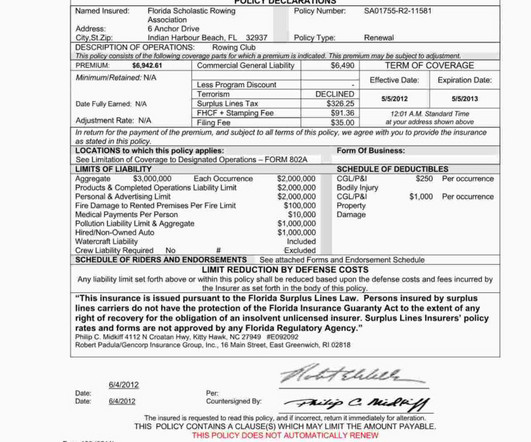Commercial Tenant Risk Mitigation, Insurance, Tracking, and Best Practices
Esquire Property Management Group
DECEMBER 11, 2023
Managing tenant insurance is a crucial element in overseeing commercial real estate (CRE) from a landlord and commercial property management perspective. Tenant insurance comes in several forms. Finally, business owner’s insurance is a combination of business renter’s insurance and a CGL policy.












Let's personalize your content